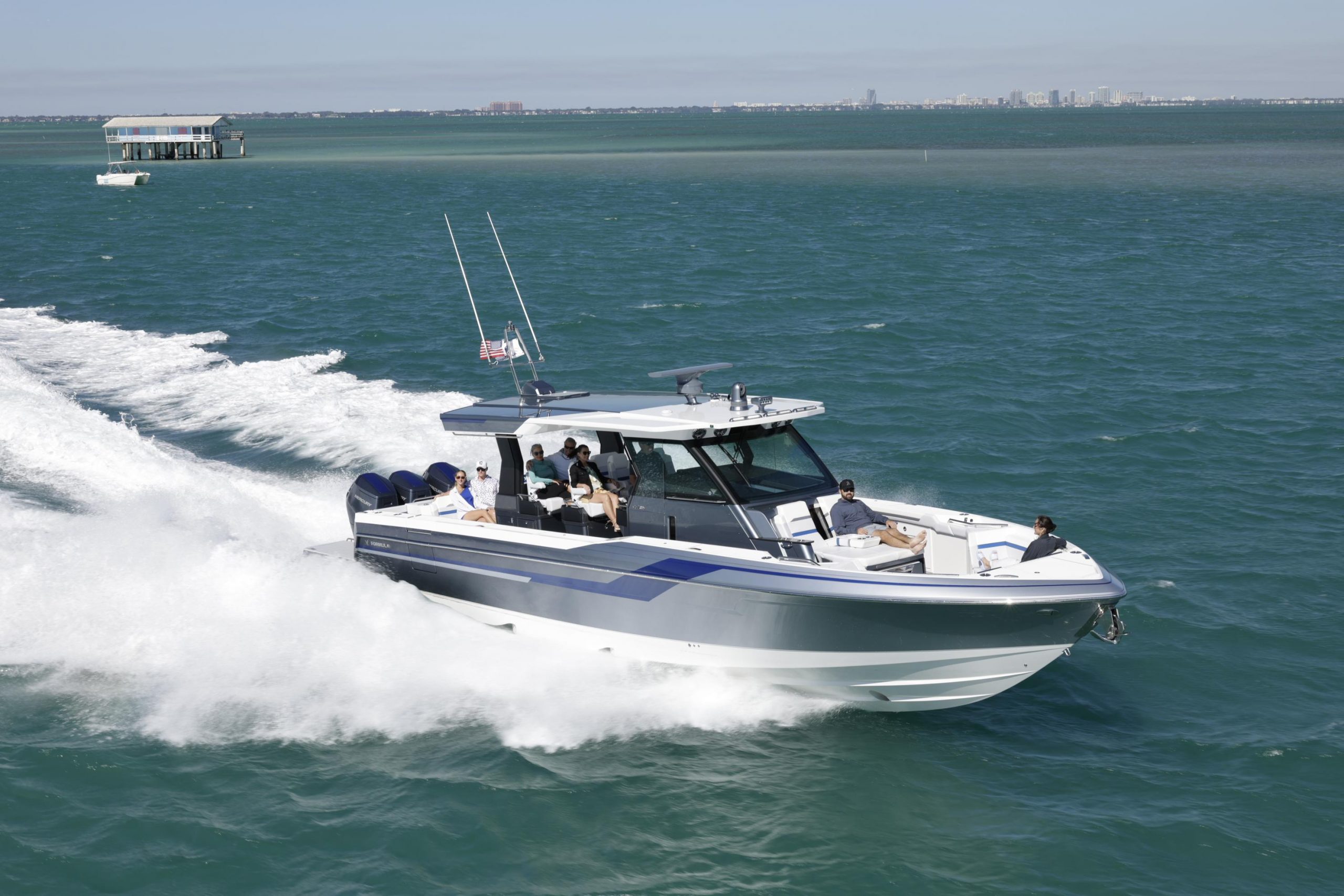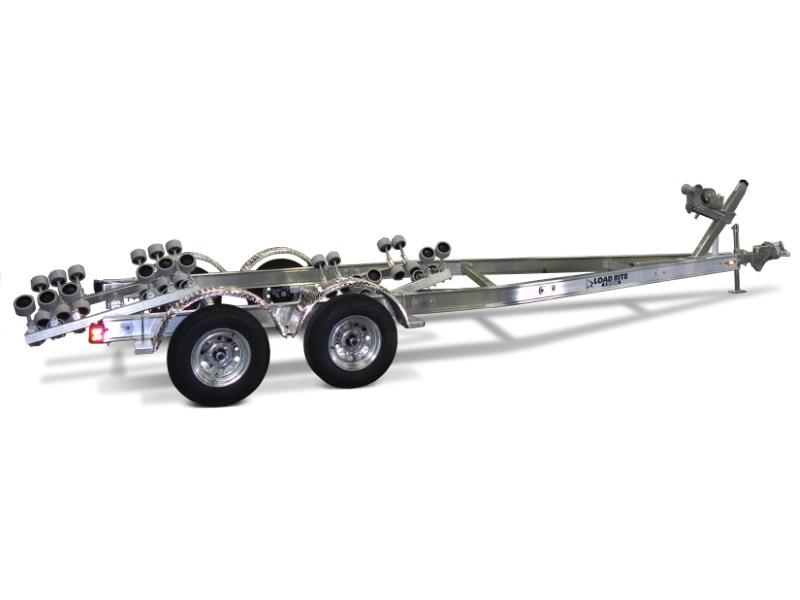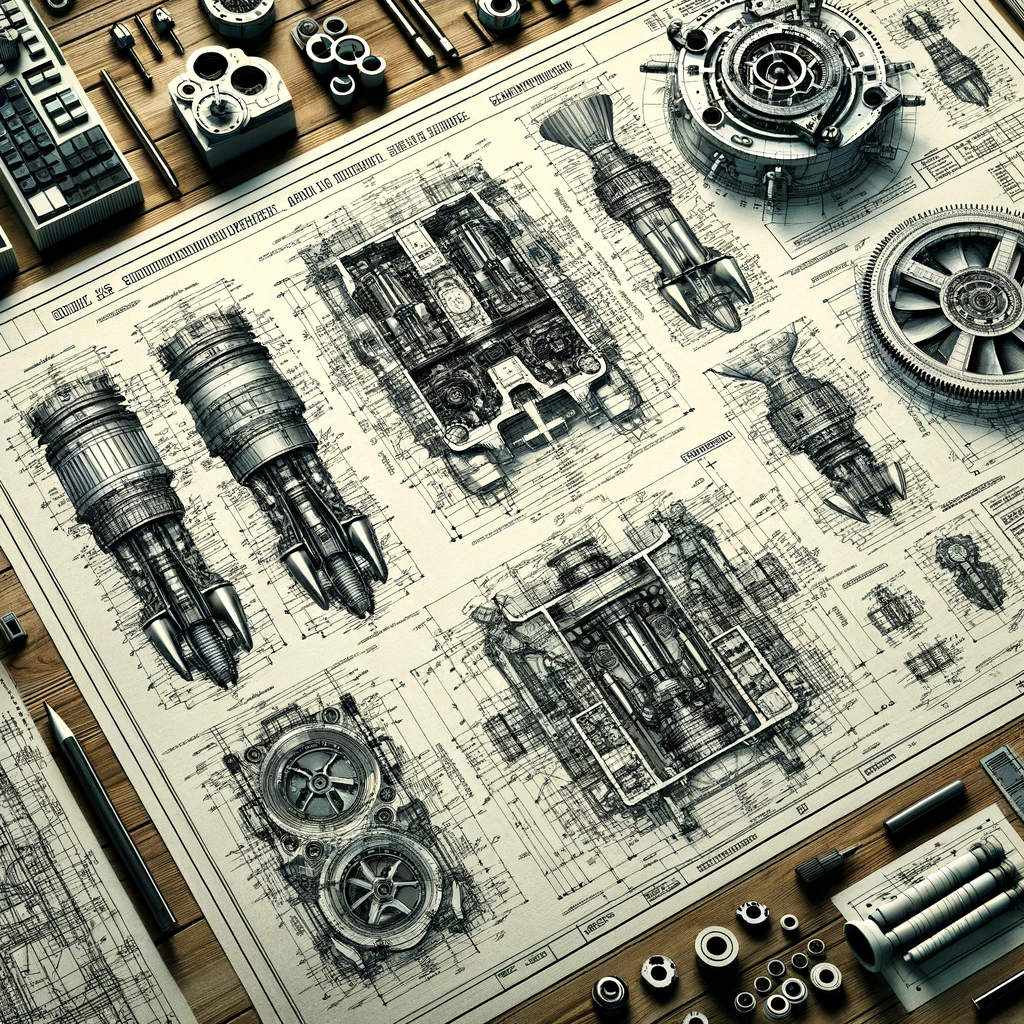Rescue Boats: Essential Guide for Water Rescue Operations
When emergencies strike on the water, specialized vessels become the difference between life and death. Rescue boats are purpose-built watercraft designed specifically for emergency response operations, including firefighting, search and rescue missions, and swift water rescues. These vessels must operate reliably in extreme conditions while providing safety and mobility for rescue personnel.

Modern rescue boats come in various configurations, from inflatable designs to aluminum-hulled vessels, each engineered for specific operational requirements. Fire departments, coast guard units, and emergency response teams worldwide depend on these specialized craft to reach victims in dangerous waters where standard boats cannot safely operate.
Understanding the different types of rescue boats, their essential features, and proper selection criteria helps emergency services choose the right vessel for their specific needs. This guide explores the key considerations for rescue boat design, equipment, training requirements, and operational deployment across various emergency scenarios.
What Are Rescue Boats?
Rescue boats are specialized vessels built to save lives during water emergencies. These boats combine speed, durability, and special equipment to handle dangerous conditions and reach people in distress quickly.
Definition and Purpose
A rescue boat is a specialized watercraft designed to provide emergency assistance during maritime incidents. These vessels serve as critical tools for saving lives when people face danger on or near water.
Primary purposes include:
- Responding to distress calls from vessels in trouble
- Evacuating people from sinking ships
- Assisting during natural disasters like floods
- Supporting search and rescue operations
Rescue boats differ from regular boats because they are built specifically for emergency situations. They must operate in harsh weather conditions and rough seas where other boats might fail.
Professional organizations rely on these boats because they can reach emergency scenes faster than larger vessels. The boats are designed to work in shallow water and can be launched quickly when every second counts.
Key Features and Capabilities
Rescue boats have special features that make them effective in emergency situations. Most rescue boats are lightweight yet extremely durable to handle tough conditions.
Essential capabilities include:
- Rapid deployment - Can be launched within minutes
- Shallow water operation - Able to reach shore and beach safely
- High speed - Faster than traditional boats
- Fuel efficiency - Longer operational range
- Stability - Safe operation in rough seas
Many rescue boats are RHIBs (Rigid Hull Inflatable Boats). These boats have a hard bottom with inflatable sides that provide extra buoyancy and stability.
The boats carry emergency equipment like medical supplies, life jackets, and communication devices. Some have special lighting systems for night operations and GPS systems for navigation.

Types of Rescue Operations
Rescue boats handle many different types of emergency situations on water. Search and rescue missions are among the most common operations these boats perform.
Major operation types:
- Vessel assistance - Helping disabled or sinking boats
- Person overboard - Recovering people who fell into water
- Flood response - Evacuating people from flooded areas
- Medical emergencies - Transporting injured people to safety
Coast guards and emergency response teams use rescue boats for offshore operations. Fire departments deploy them during waterfront emergencies and natural disasters.
These boats also support land-based rescue crews by providing water access to areas that cannot be reached by foot. They can transport rescue personnel and equipment to remote locations quickly.
Commercial ships carry rescue boats as safety equipment. These boats serve as backup escape methods if the main vessel experiences problems at sea.
Types of Rescue Boats
Rescue boats come in several designs, each built for specific water rescue situations. The main types include lightweight inflatable models, durable rigid hull vessels, specialized swiftwater craft, and boats designed for ice and flood conditions.
Inflatable Rescue Boats
Inflatable rescue boats use air-filled chambers to create buoyancy and stability. These vessels are lightweight and easy to transport to emergency locations.
Key advantages include portability and quick deployment. Teams can carry these boats to remote areas where larger vessels cannot reach. The inflatable design allows for compact storage on emergency vehicles.
Most inflatable rescue boats feature multiple air chambers. This design prevents total failure if one chamber gets damaged during a rescue operation.
The boats typically measure 10 to 16 feet in length. They can carry 4 to 8 people depending on the model and conditions.
Common uses include:
- River and lake rescues
- Flood response operations
- Beach and coastal emergencies
- Backup support for larger rescue vessels
The soft sides provide safety benefits during water rescue operations. Victims can grab onto the boat without risk of injury from hard surfaces.
Rigid Hull Rescue Boats
Rigid hull rescue boats use fiberglass, aluminum, or composite materials for their construction. These vessels offer superior durability and performance in rough water conditions.
The solid hull design provides better speed and handling compared to inflatable models. This makes them ideal for open water rescues and long-distance operations.
Most rigid hull boats measure 16 to 30 feet in length. They typically feature powerful outboard engines that allow for rapid response times.
Design features often include:
- Self-draining decks
- Built-in storage compartments
- Medical equipment mounting points
- Communication systems
These boats excel in coastal water rescue missions. They can handle larger waves and stronger currents than inflatable alternatives.
The rigid construction allows for mounting of specialized equipment. This includes radar systems, searchlights, and medical stretchers.
Maintenance requirements are generally higher than inflatable boats. However, the increased durability often makes this worthwhile for professional rescue teams.
Specialized Swiftwater Boats
Specialized swiftwater boats are designed for river and stream rescue operations. These vessels feature unique hull shapes and safety systems for fast-moving water.
The boats use shallow draft designs to navigate in low water conditions. This allows rescue teams to reach victims in areas where deeper hull boats cannot operate.
Length typically ranges from 12 to 18 feet. The boats feature reinforced construction to handle impacts with rocks and debris.
Essential design elements include:
- Reinforced bow sections
- Quick-release anchor systems
- Multiple grab handles
- Foam-filled compartments for unsinkable design
Training requirements for swiftwater boats are extensive. Operators must understand river hydraulics and swift water rescue techniques.
The boats often work alongside rope rescue systems. This combination allows teams to safely extract victims from dangerous water situations.
These vessels are primarily used by specialized water rescue teams. Fire departments and search and rescue organizations commonly operate them in mountainous and river regions.
Ice and Flood Rescue Boats
Ice and flood rescue boats feature specialized designs for extreme weather conditions. These vessels must operate in contaminated water, debris fields, and freezing temperatures.
Flood rescue boats typically use aluminum construction for durability against floating debris. The metal hulls resist punctures from sharp objects common in flood waters.
Ice rescue boats feature reinforced hulls and specialized propulsion systems. Some models use air propulsion instead of water propellers to prevent ice damage.
Key features for these conditions include:
- Reinforced hull plating
- Heated operator compartments
- Specialized ice rescue equipment storage
- Emergency heating systems for victims
Flood rescue boats often feature shallow drafts. This allows operation in streets and areas with limited water depth during urban flooding.
The boats typically carry specialized safety equipment. This includes ice picks, hypothermia treatment supplies, and contamination protection gear.
These vessels require specialized operator training. Teams must understand ice safety, flood water hazards, and cold water rescue techniques.
Key Features and Equipment
Rescue boats require specialized features and equipment to perform water rescue operations effectively. These vessels must have advanced stability systems, reliable propulsion options, and adaptable platforms that can handle various emergency scenarios.
Stability and Safety Systems
Rescue boats incorporate multiple stability features to ensure safe operations in challenging conditions. Non-slip decks provide secure footing for rescue personnel during wet conditions. Grab rails and handholds are strategically placed throughout the vessel to prevent falls.
Self-righting capabilities are critical for rescue boat safety. These systems automatically return the vessel to an upright position if it capsizes during operations. The hull design includes sealed compartments that maintain buoyancy even when partially flooded.
Safety equipment includes built-in life jacket storage, fire extinguishers, and first aid kits. Emergency signaling devices such as flares, horns, and strobe lights help communicate with other rescue units. GPS systems and radio equipment enable coordination with rescue teams.
Modern rescue boats feature collision-resistant materials like aluminum or reinforced fiberglass. These materials protect against impact damage from debris or underwater obstacles during water rescue missions.
Propulsion and Power Options
Rescue boats use various propulsion systems depending on their intended use. Outboard engines provide easy maintenance access and can be tilted to avoid shallow water damage. Inboard engines offer better weight distribution and protection from the elements.
Diesel engines deliver high torque for heavy loads and extended operations. They provide better fuel efficiency for long-range missions. Gasoline engines offer quick acceleration and easier starting in cold conditions.
Jet propulsion systems work well in shallow waters and around debris. They eliminate the risk of propeller damage and reduce injury risk to rescue victims. Twin-engine configurations provide redundancy and improved maneuverability.
Power requirements vary based on vessel size and mission demands. Smaller rescue boats typically use 40-150 horsepower engines. Larger vessels may require 200-500 horsepower for effective operations in rough seas.
Modular Platforms and Accessories
Rescue boats feature modular designs that allow customization for specific missions. Removable equipment mounts accommodate stretchers, medical equipment, and diving gear. Quick-release systems enable rapid deployment of rescue tools.
Davit systems provide mechanical lifting capabilities for victim recovery. These systems can handle weights up to 500 pounds safely. Hydraulic controls offer precise positioning during rescue operations.
Storage compartments are designed for specific equipment types. Waterproof compartments protect sensitive electronics and medical supplies. Open storage areas accommodate bulky items like life rafts and rope.
Lighting systems include searchlights, deck lights, and underwater illumination. LED technology provides bright, energy-efficient lighting for night operations. Emergency backup lighting systems ensure visibility during power failures.
Applications of Rescue Boats
Rescue boats serve critical roles in maritime safety operations across multiple scenarios. These vessels handle emergency evacuations, combat fires in marine environments, and conduct search and rescue missions in various water conditions.
Emergency Response and Evacuation
Rescue boats provide rapid response capabilities during maritime emergencies. They evacuate passengers and crew from disabled vessels, sinking ships, and offshore platforms.
Fast rescue boats deploy quickly from larger vessels or shore stations. Their lightweight design allows for immediate launch in emergency situations. These boats can reach distressed individuals within minutes of an alarm.
Totally enclosed lifeboats protect evacuees from harsh weather conditions. The sealed hull design shields passengers from waves, wind, and fire exposure. These boats carry multiple passengers safely to nearby vessels or shore.
Emergency evacuation scenarios include:
- Ship fires and explosions
- Vessel collisions and grounding
- Medical emergencies at sea
- Platform evacuations during storms
Rescue boat crews train regularly for evacuation procedures. They practice launching techniques, passenger loading, and navigation to safe zones. Quick response times often determine survival rates in water rescue situations.
Firefighting and Hazardous Environments
Fire rescue boats combat blazes on ships, ports, and offshore facilities. These specialized vessels carry high-pressure water cannons and chemical fire suppression systems.
Water cannon systems deliver powerful streams to reach tall structures. The boats position themselves strategically around burning vessels. Multiple rescue boats can coordinate attacks from different angles.
Chemical suppression equipment handles fuel fires and hazardous materials. Foam systems smother petroleum-based fires more effectively than water alone. Specialized crews understand different fire types and suppression methods.
Firefighting applications include:
- Ship engine room fires
- Cargo vessel blazes
- Oil platform emergencies
- Port facility incidents
These boats operate in dangerous conditions with extreme heat and toxic smoke. Crew protection systems include breathing apparatus and heat-resistant equipment. Fire rescue boats often work alongside land-based emergency services.
Search and Rescue Missions
Search and rescue missions locate missing persons and vessels in distress. Rescue boats cover large water areas efficiently using advanced detection equipment.
Sonar and radar systems help locate submerged objects and survivors. Night vision equipment extends search capabilities in low-light conditions. GPS systems track search patterns and mark important locations.
Medical equipment onboard includes stretchers, first aid supplies, and oxygen systems. Some rescue boats feature temporary medical cabins for patient stabilization. Trained medical personnel provide care during transport to hospitals.
Search operations involve:
- Missing swimmer recovery
- Overdue vessel location
- Aircraft crash response
- Natural disaster relief
Rescue boat teams coordinate with helicopters and aircraft for expanded coverage. They communicate with coast guard stations and other emergency services. Water rescue operations require specialized training in swift water techniques and victim recovery methods.
Training and Operational Considerations
Rescue boat operations demand specialized training programs, swift deployment protocols, and strict maintenance standards. These elements work together to ensure crews can perform effective water rescue missions while maintaining safety standards.
Crew Training Requirements
Emergency service personnel must complete comprehensive training programs that cover codes and regulations governing rescue boat operations. These programs include both classroom instruction and practical hands-on experience.
Core Training Components:
- Boat selection and handling techniques
- Rescue craft rigging and outfitting
- Emergency boat procedures
- Moving-water tactics and techniques
- Night operations experience
Training courses typically span 24 hours over three days. Personnel learn to operate rescue boats in both static and dynamic water conditions.
Documentation Requirements:
- Training dates and drill times
- Operational status during exercises
- Sea and weather conditions
- Names and duties of participants
Organizations must maintain detailed records of all rescue boat training activities. These records help track crew readiness and identify areas needing improvement.
The training follows standards from the International Aeronautical and Maritime Search and Rescue Manual. This ensures consistent practices across different rescue organizations.
Deployment and Rapid Response
Man overboard recovery drills prepare crews for time-critical situations where survival depends on rapid response. Coordinated rescue boat deployment becomes essential during these emergencies.
Response Protocols:
- Immediate crew notification systems
- Pre-deployment safety checks
- Launch sequence procedures
- Communication protocols with command
Rescue teams must practice deployment procedures regularly. Quick response times often determine the success of water rescue operations.
Equipment Readiness:
- Rescue boats maintained in ready state
- Safety equipment properly stowed
- Communication devices tested
- Weather monitoring systems active
Crews train to handle unpredictable conditions during water rescue missions. Multiple factors work together to create dangerous situations for both survivors and rescue personnel.
Maintenance and Safety Protocols
Minimum standards exist for rescue boats operated by fire and rescue services. These standards cover health and safety requirements, management protocols, and operational procedures.
Maintenance Requirements:
- Regular thorough examinations
- Operational testing schedules
- Equipment overhaul procedures
- Repair documentation standards
Safety protocols aim to improve firefighter and crew safety during rescue boat operations. Uniform standards ensure consistent maintenance practices across organizations.
Safety Considerations:
- Vehicle specifications must meet rescue service requirements
- Launch systems require regular inspection and testing
- Release gear needs documented maintenance schedules
- Emergency equipment must remain operational
Organizations follow established requirements for maintenance and operational testing. These create safe and documented standards for all rescue boat equipment and operations.
Choosing the Right Rescue Boat
Selecting the proper rescue boat requires careful evaluation of mission requirements, equipment specifications, and operational environments. Brand comparison and customization options play crucial roles in meeting specific rescue needs.
Operational Needs Assessment
Mission requirements determine the most suitable rescue boat type for each operation. Water conditions, rescue frequency, and crew size directly impact boat selection decisions.
Water Environment Factors
- Ocean operations need boats that handle large swells and rough conditions
- Lake rescues require stable platforms for extended cruising distances
- River operations demand shallow-draft boats with excellent maneuverability
- Ice conditions require specialized all-weather capabilities
Crew and Capacity Requirements Teams must evaluate how many rescuers the boat will carry regularly. Passenger capacity ranges from 4-person lightweight models to 8-person heavy-duty versions.
Storage and deployment constraints affect boat choice significantly. Departments with limited storage space benefit from deflatable models that pack into compact cases.
Speed and Response Time Fast rescue boats with powerful engines suit emergency situations requiring rapid response. Standard rescue boats work well for planned operations and training exercises.
Comparing Leading Brands
Several manufacturers specialize in professional rescue boat production. Each brand offers distinct advantages for different operational needs.
DIB (Disaster Inflatable Boats) DIB produces the Chesapeake model at 17 feet with nine separate air chambers. The Potomac Rescue Boat measures 16 feet and features a rigid aluminum deck for equipment security.
Oceanid The Rapid Deployment Craft spans 15 feet and weighs only 50 pounds. Its rockered ends allow rescuers to drive over victims while keeping their heads above water.
SeaWolf Their Survivor Series offers 13-foot to 28-foot models with six to eight air compartments. These boats handle four-season operations including ice conditions.
Sea Eagle The SR series features rigid transom plates for 40-horsepower motors. Optional steering consoles transform these boats into true speedboats for challenging conditions.
Customization and Upgrades
Rescue boats accept various modifications to enhance operational effectiveness. Motor selection, deck configuration, and safety equipment integration require careful planning.
Propulsion Options
- Jet drives work better in shallow or debris-filled water
- Propeller motors provide more power for open water operations
- Horsepower ratings range from 10HP for basic models to 80HP for heavy-duty versions
Deck and Floor Modifications Rigid aluminum decks increase structural integrity and equipment mounting points. High-pressure drop-stitch floors offer lighter weight with superior maneuverability.
Safety Equipment Integration Built-in pressure relief valves prevent over-inflation during temperature changes. Multiple air chambers ensure the boat remains functional if one section fails.
Storage Solutions Custom equipment mounting systems secure medical gear and rescue tools. Waterproof storage compartments protect sensitive electronics and communication devices.
Charlie is Editor-in-Chief of Sea Magazine







